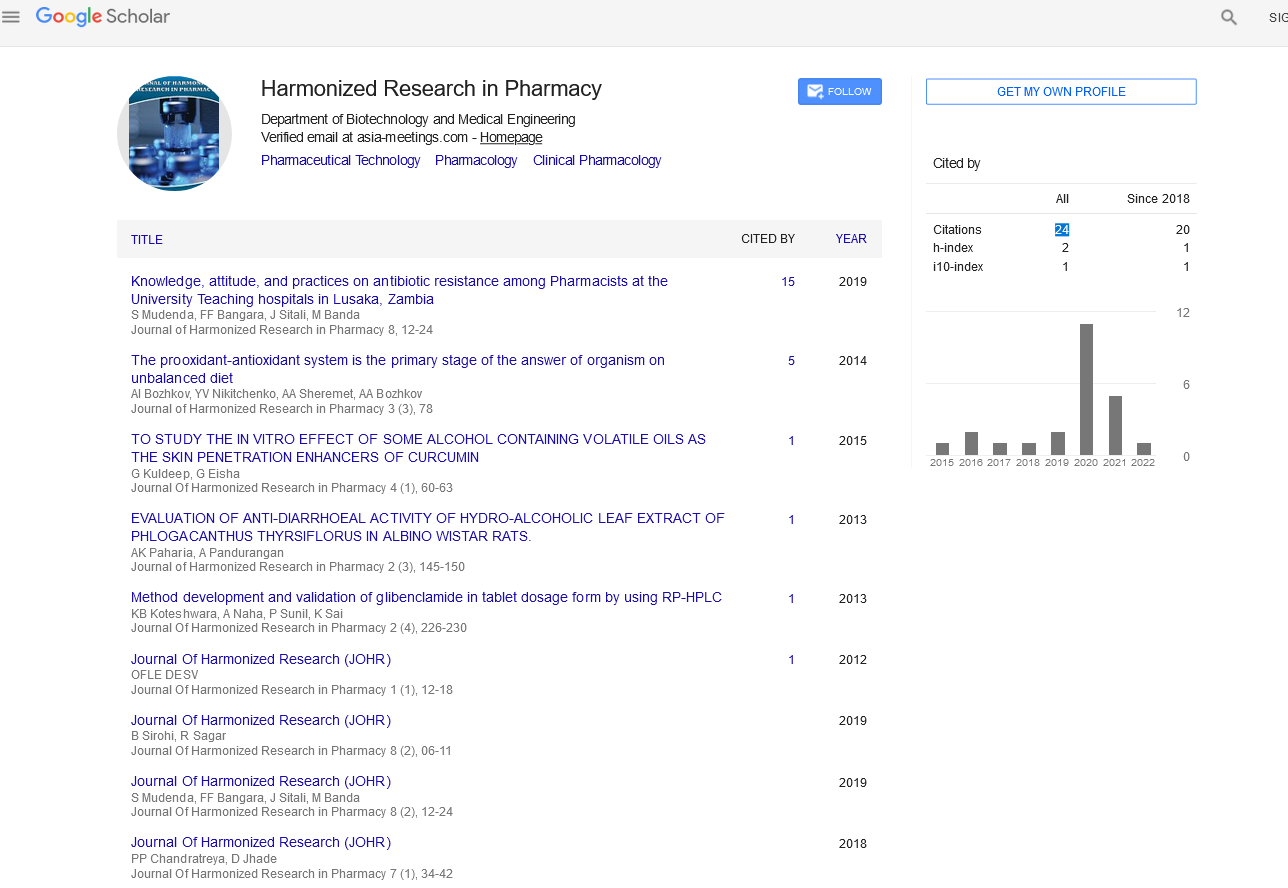Commentary - (2022) Volume 11, Issue 3
DEVELOPMENT OF A GENTLE ATOMIZER FOR NASAL DRUG DELIVERY AND PATIENT EXPERIENCE ASSESSMENT
Marais Sandra*Received: Sep 01, 2022, Manuscript No. JHRP-22-77704 ; Editor assigned: Sep 05, 2022, Pre QC No. JHRP-22-77704 (PQ); Reviewed: Sep 19, 2022, QC No. JHRP-22-77704 ; Revised: Sep 27, 2022, Manuscript No. JHRP-22-77704 (R); Published: Oct 05, 2022, DOI: 10.30876/2321-0958.22.11.188
Description
Due to its rich vascular supply, which causes a rapid systemic and local response, the nasal route is extremely important for the effective delivery of therapeutic agents, especially when rapid absorption and effect are required, as in the treatment of pain, erectile dysfunction, migraine, seizures, insomnia, panic attacks, rigidity in parkinsonism, hot flashes, emesis, and cardiovascular events. In the case of Zomig® (zolmitriptan), Imitrex® (sumatriptan), and Stadol NS (butorphanol tartrate) for the treatment of migraines, Aerodiol® (estradiol hemihydrate) for the treatment of menopausal syndrome, and PecFent® and Instanyl® (fentanyl) for the management of severe pain, just a few of the frequently used nasal products commercial Interestingly, nasal sprays are more effective at delivering medications that can cross the blood-brain barrier than injections or pills.
Due to the hepatic 1st pass metabolic bypassing properties of the nasal route of drug delivery, it is superior to oral or intravenous routes in terms of non-invasiveness, self-administration, shorter time to effect onset, and better bioavailability. Despite the benefits mentioned, intranasal drug delivery faces a number of difficulties and restrictions when it comes to the absorption of therapeutic agents with low intrinsic permeability, hydrophilic molecules like peptides, proteins, and nucleotides, as well as because of the inherent features of the nasal cavity, such as rapid mucociliary clearance and enzymatic degradation. Together, the aforementioned elements may negatively affect how patients perceive and take a medication, which could result in low compliance and suboptimal drug delivery.
In order to effectively manage an illness and deliver treatments, patient compliance with a specified treatment plan is essential. Therefore, it is crucial that the patient accepts and is happy with the recommended treatment plan. Recent research has shown that patients’ attitudes toward a therapy regimen are influenced by the agent’s sensory triggering properties as well as by how simple and comfortable it is to administer. Variations in delivery methods, operational techniques, and usability are key elements influencing patient adherence. Given the positive correlation between patient preference and compliance, it is crucial to take patient acceptability into account when prescribing drugs, especially those that must be given intranasally. The ambiguity and variation in the instructions show a lack of understanding of the proper ways to use a nasal spray device. Observed that as viscosity increased, the area of deposition shrank, but this was mitigated by a rise in droplet size and a fall in the width of the spray plume. A better patient experience and increased patient compliance are highly possible if all the aforementioned criteria are carefully considered when creating an intranasal drug delivery device.
The nose is an appropriate site for administering a variety of medications and vaccines, but its full potential has not yet been fully explored due to structural restrictions relating to nasal anatomy, physiology, and aerodynamics. Significant advancements in the technical device sector have demonstrated observable trustworthy in vitro outcomes, improving clinical performance. Testing in vitro performance is without a doubt crucial for determining the quality of a product, but its ability to predict clinical performance in vivo is still debatable. The early stages of device design may be critical for CFD models of nasal aerodynamics; followed by upcoming developments that boost predictive value. Important data must be obtained through human in vivo deposition and clearance studies, especially if the latest developments call for extensive quantification and tissue attenuation correction. Controlled clinical studies are required to assess changes in symptoms and the functional architecture, as well as to demonstrate the effectiveness of innovative medications and devices.

Google Scholar citation report
Citations : 147
Journal of Harmonized Research in Pharmacy received 147 citations as per google scholar report









